





Finding the right influencer marketing platform can be tricky, and many brands that have tried Reech Influence Cloud are now looking for better options. While the tool offers campaign management and influencer search, marketers often point out three major drawbacks: its limited global database that restricts international reach and a lack of advanced reporting and integrations needed for scaling campaigns. These gaps have pushed businesses to explore alternatives that deliver stronger ROI, easier workflows, and more reliable data.
Choosing the right software is not just a cost decision, but a growth driver for marketers who want to compete in crowded markets. Below, we’ll break down the top 10 Reech Influence Cloud alternatives to help you find the platform that best fits your business needs:
Let’s discover three reasons why some users might be seeking Reech Influence Cloud alternatives:
Many users report that the influencer search function is difficult to manage, with too many combinations and filters that make it hard to pinpoint the right profiles. Instead of streamlining discovery, the tool often leaves marketers feeling lost in the process. This adds unnecessary time and frustration when building campaigns.
One of the most frequently mentioned drawbacks is the inability to assign internal ratings or scores (such as stars) to influencers. Without this feature, teams struggle to evaluate and track creator performance consistently, making it harder to refine long-term partnerships.
Users note that Reech Influence Cloud falls short in offering full insights into platforms like TikTok and Twitch. Since these networks are vital for Gen Z and gaming audiences, the lack of access to community statistics creates a significant blind spot for brands targeting younger demographics.
Getting started with Reech can feel overly complicated, with users describing onboarding as difficult and unintuitive. On top of this, some campaigns deliver underwhelming results, leading marketers to question the return on investment compared to other platforms with smoother setups and stronger outcomes.
Our comparison focuses on several key aspects:
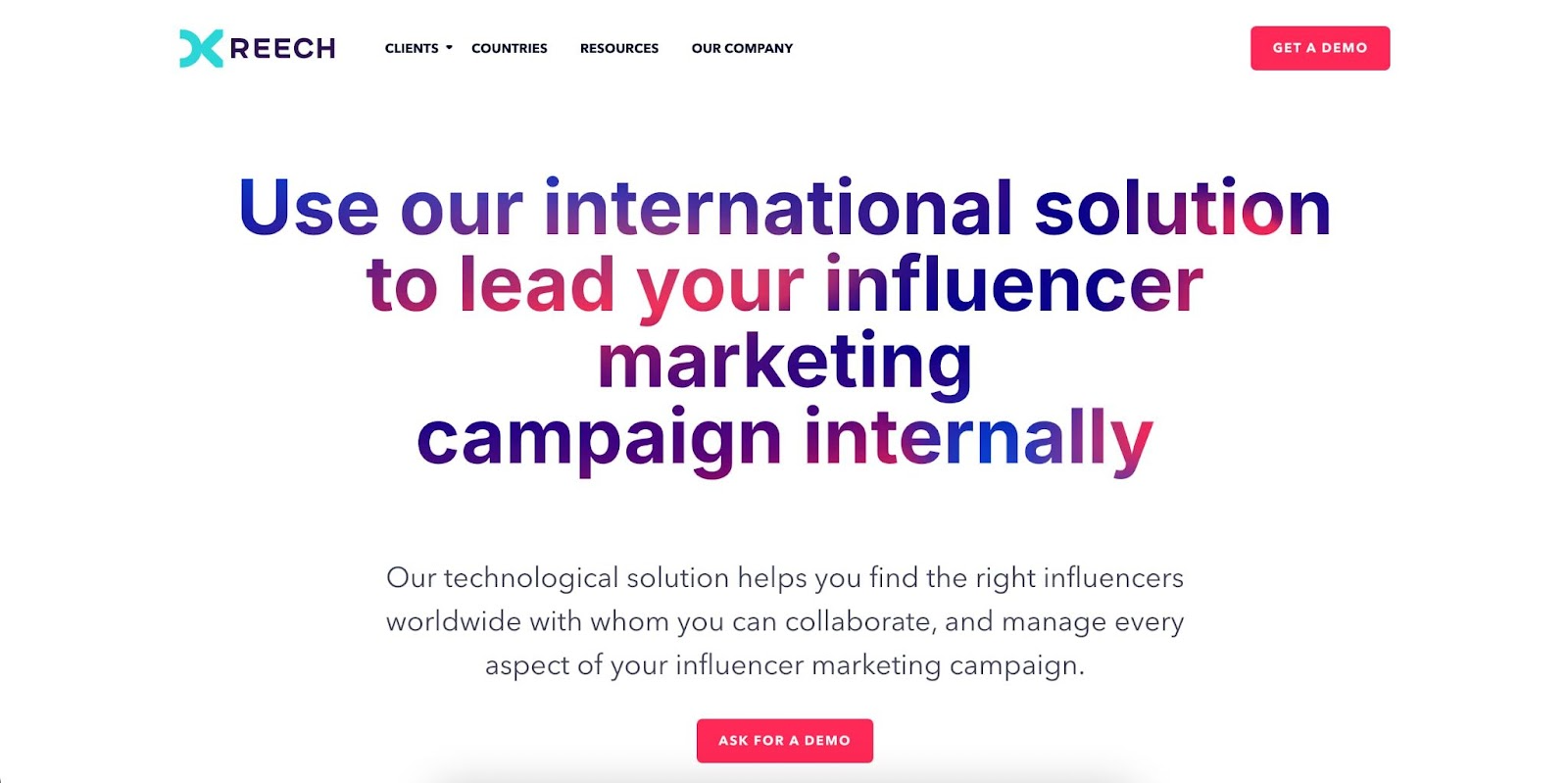
Platform Coverage: Instagram, YouTube, TikTok, Facebook, Twitter (X)
Best For: Reech Influence Cloud is best for mid-sized to large brands that need a centralized tool to organize influencer campaigns, track performance, and scale collaborations with structured workflows.
Pricing: Undisclosed pricing.
Reviews: 4.4 / 5.0 (G2)
Ease of Use (UX/UI): Users say the platform provides a comprehensive set of tools and filters. However, some note that the search functionality feels overwhelming due to too many combinations.
Customer Support: Customer support is generally helpful, but feedback shows response times can vary. Some users expected faster resolution for technical issues.

Platform Coverage: Instagram, TikTok, YouTube, Facebook, Pinterest, Snapchat, X, Twitch
Best For: Influencer Hero is best for growing D2C brands, eCommerce businesses on Shopify or WooCommerce, and agencies that want an all-in-one solution to scale influencer campaigns with deep insights, automation, and ROI tracking.
Pricing: (Plans are monthly and scalable.)
Reviews: 5.0 / 5.0 (Capterra)
Ease of Use (UX/UI): Influencer Hero is known for its clean and intuitive interface, making campaign setup fast and accessible even for non-technical teams. Automated workflows, customizable email templates, and a drag-and-drop dashboard ensure campaigns can be launched in under an hour.
Customer Support: Customer support is one of Influencer Hero’s strongest differentiators. Every plan includes a dedicated account manager from day one, ensuring brands always have a real partner for success. The platform delivers 24/7 real-human live chat, fast-response email support, and an in-depth Help Center packed with written and video tutorials.
While both platforms offer influencer discovery, campaign management, and reporting, Reech Influence Cloud leans more toward structured workflows and detailed analytics, often favored by mid-to-large brands. However, its lack of transparent pricing and a steeper learning curve can create adoption barriers.
Influencer Hero, on the other hand, combines transparency with scalability. Its flexible monthly plans, intuitive UX, and advanced CRM automation make it especially appealing to eCommerce and D2C brands. With premium customer support and deep eCommerce integrations, Influencer Hero positions itself as a more agile and cost-effective solution compared to Reech.
Pricing-wise, Influencer Hero offers clear monthly plans starting at $649, while Reech’s pricing remains undisclosed.
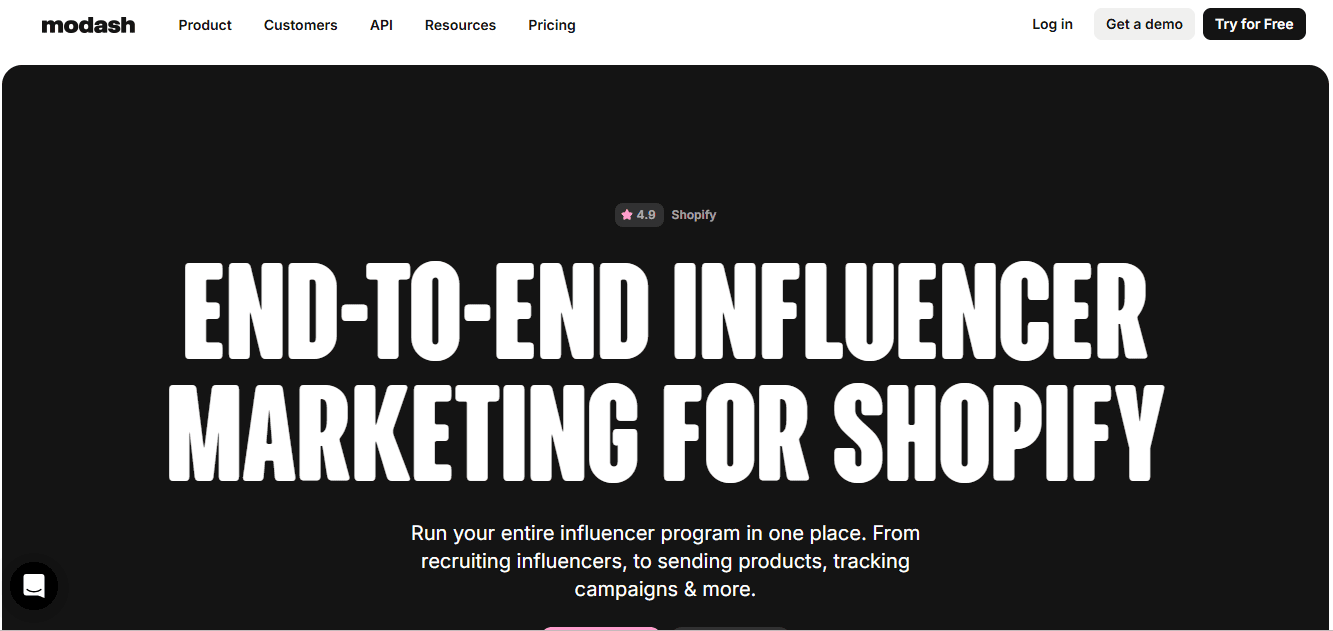
Platform Coverage: Instagram, TikTok, YouTube, and profile recognition for X, Snapchat, and other platforms.
Best For: eCommerce brands (especially Shopify merchants) and growth-stage DTC brands that want an end-to-end workflow for discovery, outreach, gifting/affiliate, tracking and payouts.
Pricing: Modash offers free trials to both their Essentials and Performance plan.
Reviews: 4.9 / 5.0(Capterra.com)
Ease of Use (UX/UI): Users commonly report Modash has an intuitive, clean dashboard and fast onboarding that makes discovery and list management efficient. Some users note a few advanced filters and enterprise flows take a short learning period but overall usability scores are high.
Customer Support: Users praise Modash’s onboarding and responsive support during setup, with dedicated onboarding for paid plans and helpful documentation. A small number of reviews ask for faster responses in peak times, but the general consensus is positive for support and onboarding.
Reech Influence Cloud is positioned as a deep, analytics-first platform for mid-sized to large brands that need structured workflows, granular audience authenticity checks, and custom, enterprise-level reporting; pricing is typically quote-based and not publicly listed, which suits clients wanting bespoke integrations and SLAs.
Modash, by contrast, focuses on a streamlined, Shopify-centric workflow with strong public creator coverage, AI search, gifting automation, affiliate payouts, and transparent tiered pricing (Essentials $199/mo, Performance $499/mo billed yearly, plus Enterprise). This makes Modash an attractive choice for DTC/Shopify brands and teams that want fast time-to-value without custom procurement.
Which to choose? Pick Reech Influence Cloud if you need enterprise-level customization, deep analytics, and a vendor that will build a bespoke setup with quote-based billing and annual contracts. Choose Modash if you’re a Shopify-based or DTC brand that values rapid discovery, AI-powered workflows, gifting and affiliate automation out of the box, and predictable pricing for scaling influencer programs.

Platform Coverage: Instagram, TikTok, YouTube, X , Twitch, Pinterest, WordPress blogs.
Best For: eCommerce brands on Shopify or Amazon looking to run influencer and affiliate campaigns that directly tie to sales performance. It’s particularly strong for mid-to-large businesses that want to convert their customer base into brand advocates while managing campaigns end-to-end.
Pricing: Upfluence offers annual contracts with the following pricing.
Reviews: 4.6 / 5.0 (G2)
Ease of Use (UX/UI): Users describe the platform as robust but slightly complex at first, given its wide feature set. Once configured, workflows like outreach, payments, and tracking are streamlined and efficient.
Customer Support: Upfluence offers onboarding and dedicated account managers for most plans, which many users highlight as helpful in mastering setup. Some reviews mention slower support responsiveness during peak times, but overall feedback on guidance and resources is positive.
Reech Influence Cloud emphasizes analytics, authenticity checks, and structured workflows tailored to brands that prioritize deep campaign reporting and complex influencer relationship management. It’s typically geared toward mid-to-large enterprises and often involves higher, non-transparent pricing with tailored solutions. By contrast, Upfluence’s pricing is more transparent, starting at $399/month for gifting-only campaigns and going up to $1,276/month (or $14,406 annually when paid upfront).
Upfluence, on the other hand, takes a more eCommerce-driven approach, particularly excelling with Shopify and Amazon sellers through native integrations, customer-to-influencer identification, and ROI-focused features like affiliate sales tracking. While both are full-service solutions, Upfluence stands out for brands that want to tie influencer marketing directly to sales performance and are willing to commit to higher annual pricing, while Reech suits organizations seeking flexibility in data depth and enterprise-level authenticity validation.
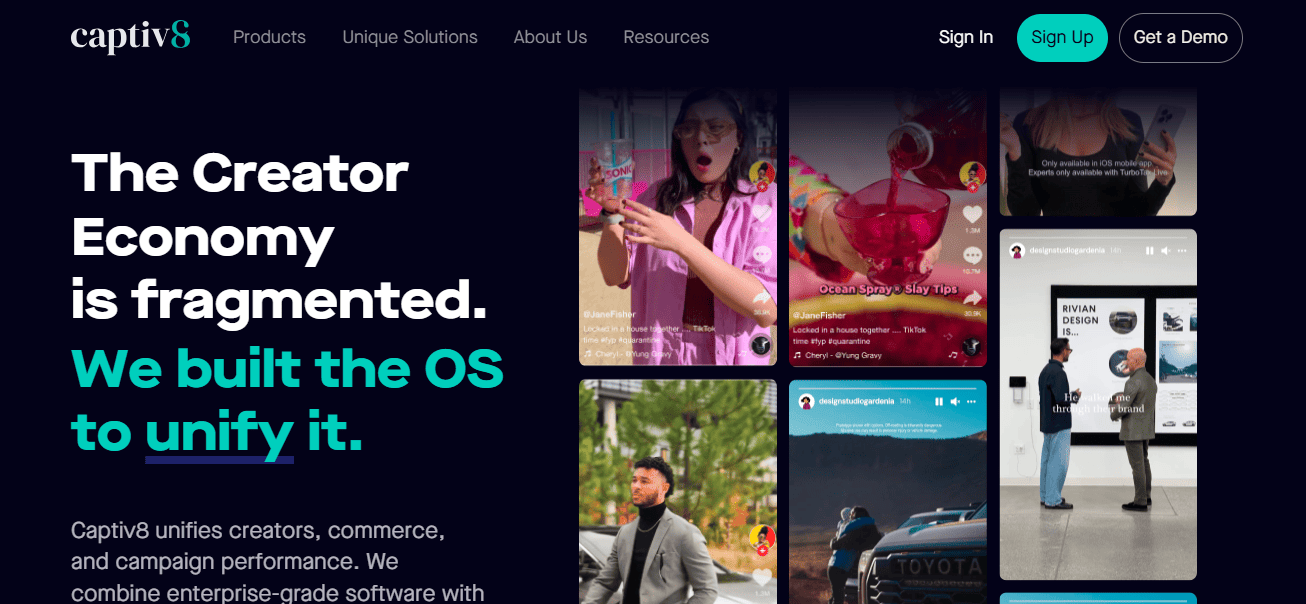
Platform Coverage: Captiv8 supports influencer campaigns across Instagram, YouTube, TikTok, Facebook, Twitter, and Pinterest.
Best For: Enterprise brands and agencies running large-scale influencer marketing campaigns that demand advanced discovery, campaign collaboration, and deep performance analytics. It’s particularly geared towards organizations with big budgets that want competitive intelligence and storefront-driven creator commerce.
Pricing:
No monthly or customizable plans are available; pricing is rigid and enterprise-focused
Reviews: 4.6 / 5.0 (G2)
Ease of Use (UX/UI): Users highlight Captiv8’s modern interface and flexible reporting tools like drag-and-drop metrics and saved search filters. However, the breadth of features can feel overwhelming at first, making onboarding more complex than leaner platforms.
Customer Support: Captiv8 provides onboarding and enterprise account support, but reviews often cite inconsistent response times. Some creators and brands have also reported unresolved support and payment issues.
Reech Influence Cloud is designed to provide flexible pricing tiers and robust analytics with audience authenticity checks, which makes it appealing for mid-sized brands seeking scalability without prohibitive upfront costs. Its pricing model and learning curve can still be challenging, but it is generally more accessible than Captiv8 for brands that are not strictly enterprise-level.
Captiv8, by contrast, positions itself firmly at the enterprise end of the market, with powerful discovery, competitive tracking, and storefront commerce capabilities. However, its steep pricing ($25K+ annually, plus significant add-ons) and support concerns make it less attractive for smaller or mid-tier businesses.
For global corporations and agencies with the budget, Captiv8 offers unmatched competitive intelligence and campaign depth, whereas Reech is the more cost-effective choice for companies seeking strong analytics and campaign management at a lower entry price.
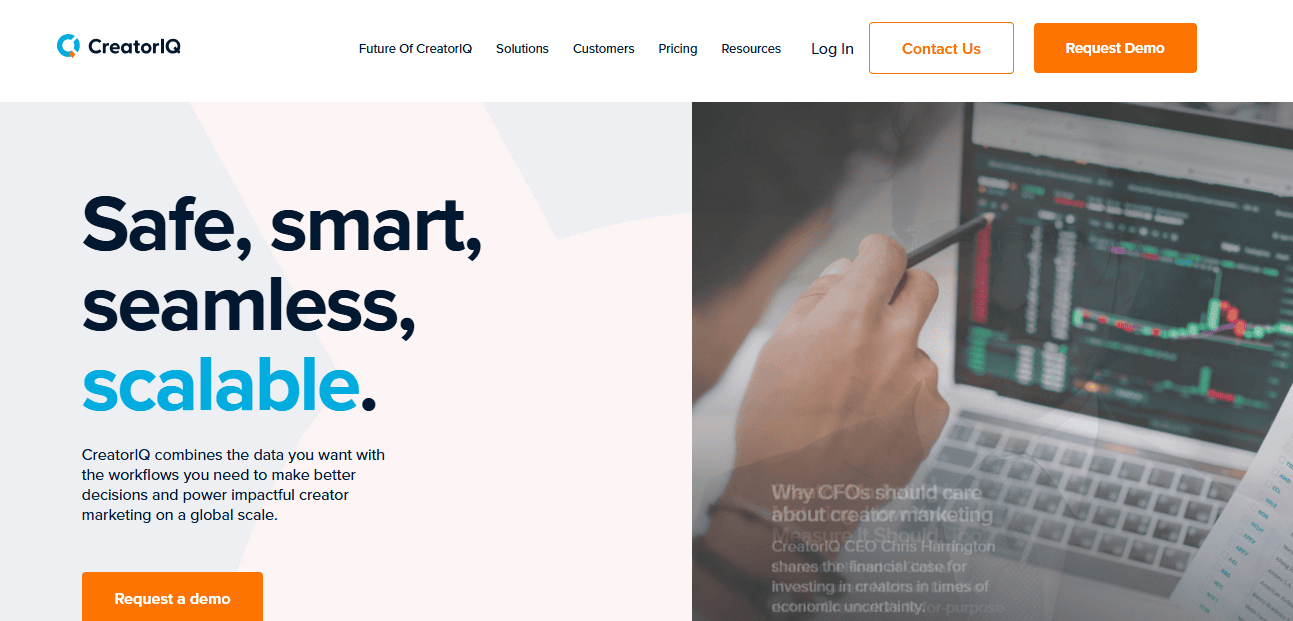
Platform Coverage: Instagram, TikTok, YouTube, Facebook, Pinterest, Twitch, X.
Best For: CreatorIQ caters to large brands, agencies, and enterprise teams that need a powerful, scalable influencer marketing platform with advanced analytics and streamlined workflows across creators and content.
Pricing:
Reviews: 4.6 / 5.0 (G2)
Ease of Use (UX/UI): The platform is praised for its sleek, modern, and visually structured interface that makes navigating data-heavy campaigns easier. Still, some users find the abundance of features and layered menus overwhelming, requiring multiple clicks and a learning period, especially for newcomers.
Customer Support: CreatorIQ earns strong feedback for its responsive and knowledgeable support team, often praised for being proactive in solving issues. On the other hand, highly customized or niche requests sometimes take longer to resolve or are only available under premium service tiers.
CreatorIQ is an enterprise-focused platform with unmatched scale, indexing over a billion public profiles and offering end-to-end workflow integration, from discovery to payments. Reech Influence Cloud, by contrast, is built for mid-to-large brands that want detailed analytics, structured workflows, and influencer discovery without going all the way to enterprise-level infrastructure.
Pricing is a key differentiator: CreatorIQ’s pricing starts at $35,000 a year while Reech Influence Cloud does not disclose its rates. Brands with massive budgets and global influencer programs may prefer CreatorIQ’s enterprise-grade AI and integrations, while those seeking strong analytics and campaign management at a slightly lower tier may find Reech more practical.
Both platforms come with a learning curve due to their depth, though CreatorIQ tends to feel heavier with layered dashboards.
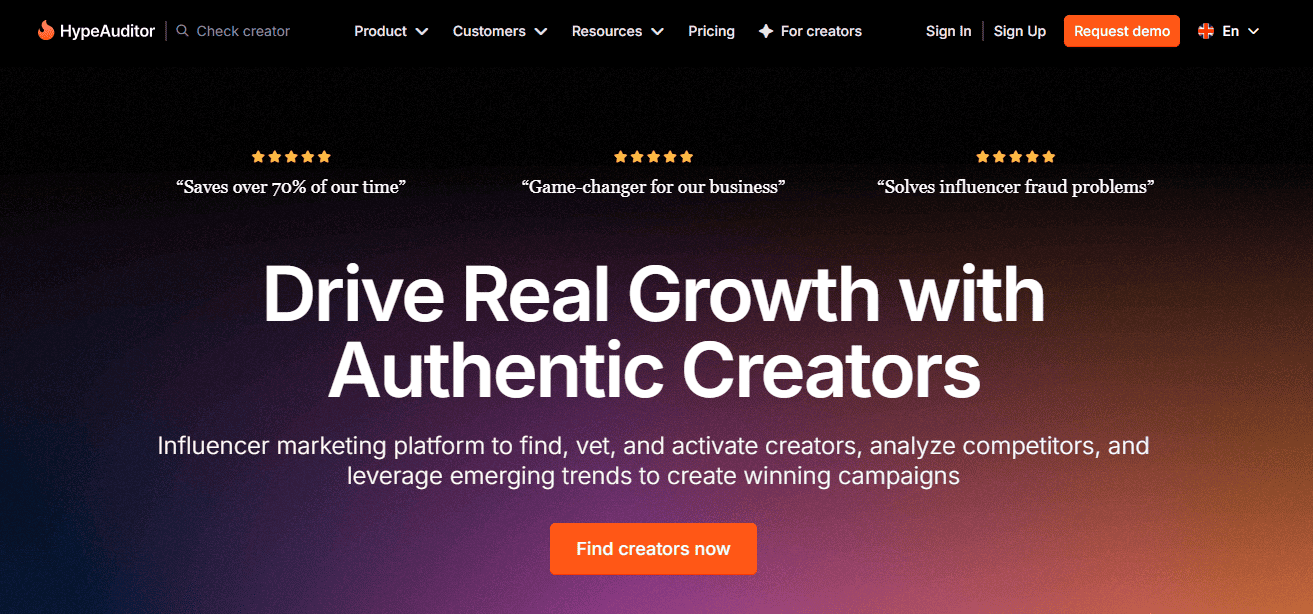
Platform Coverage: Instagram, TikTok, YouTube, Twitch, X (Twitter), Snapchat
Best For: Suits brands, agencies, and marketers prioritizing transparency, influencer quality, and fraud detection, ideal for mid-to-large scale campaigns.
Pricing: Custom plans based on usage. Flexible contract terms depending on platform access, campaign volume, and number of reports.
Reviews: 4.5 / 5.0 (G2)
Ease of Use (UX/UI): Many users find the dashboard straightforward and visually clear, with effective filters for exploring influencer profiles and campaign metrics. However, tapping into advanced analytics or detailed reporting may take additional time and learning.
Customer Support: Standard support is generally responsive and helpful, especially for onboarding and basic issues. But users note that custom or complex requests may see slower responses or inconsistent handling.
HypeAuditor shines with fraud detection, audience quality scoring, and transparent reports, making it a go-to for brands that want to prioritize influencer authenticity. Reech Influence Cloud, meanwhile, provides robust campaign management and audience insights but does not specialize as deeply in fraud detection. When it comes to cost, HypeAuditor offers a published entry plan starting at $10,000/year while Reech’s pricing is undisclosed.
For brands focused on ROI tracking and campaign structure, Reech is strong, but those more concerned with fraud detection and budget predictability may prefer HypeAuditor.
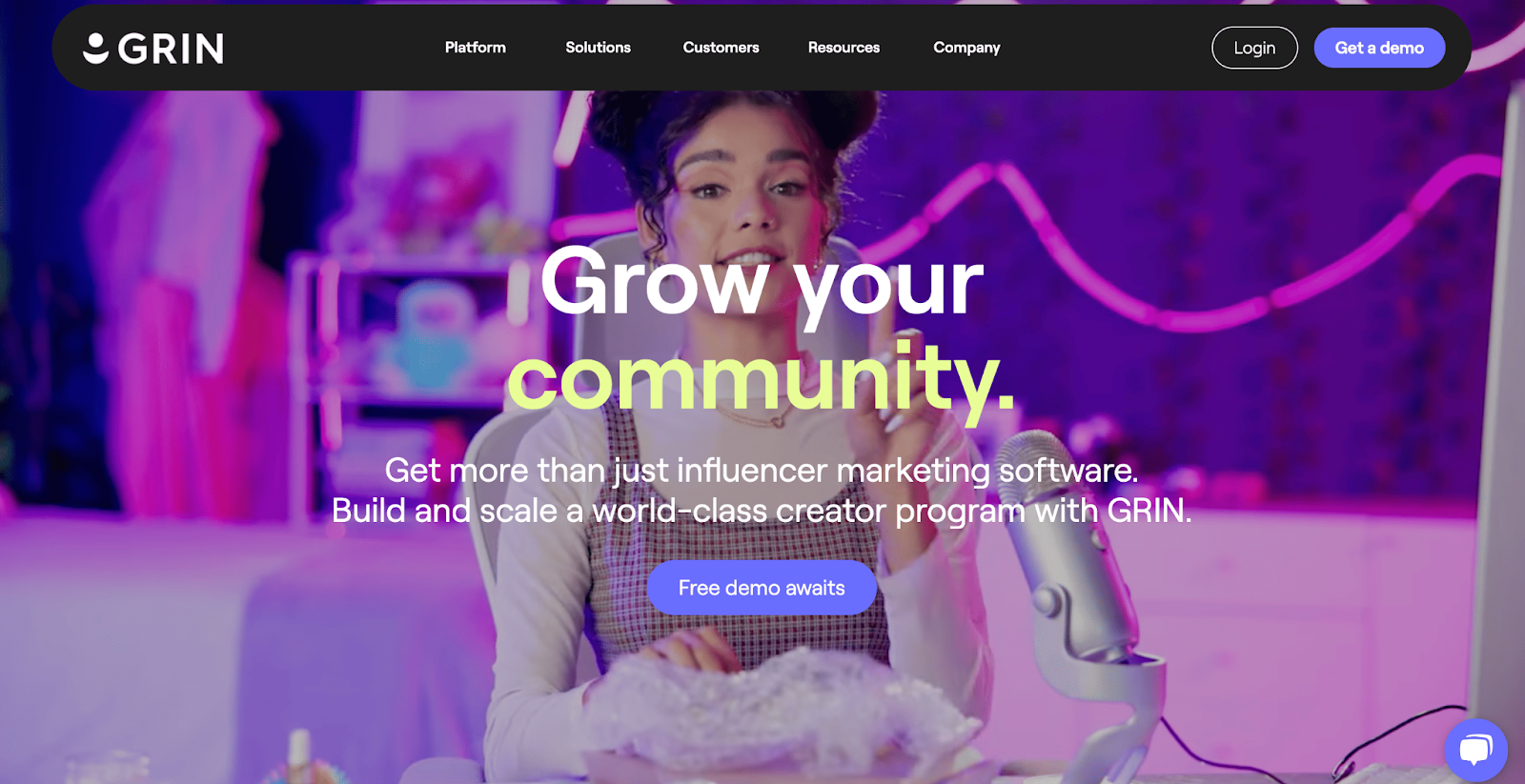
Platform Coverage: Instagram, TikTok, YouTube, X, Twitch, Snapchat
Best For: GRIN is tailored for mid-to-large eCommerce and D2C brands that want a comprehensive influencer and affiliate marketing platform, especially those with existing programs looking to expand.
Pricing: Plans start at $25,000 per year, with monthly payments available and a required 12-month commitment; typical monthly costs range from $2,500 to over $10,000 depending on usage, though pricing transparency may vary based on selected features.
Reviews: 4.5 / 5.0 (G2)
Ease of Use (UX/UI): Users often describe the interface as streamlined and well-structured, making it easier to centralize creator, campaign, and content workflows. Still, the platform’s wide range of features can feel overwhelming at first, and some areas of the UI take time to learn.
Customer Support: Generally receives strong marks for onboarding and support, with teams that are responsive, approachable, and effective in solving problems. That said, some users have noted delays or slower responses, particularly with complex or custom requests.
Check out our guide on the top 10 GRIN alternatives to find platforms that can elevate your influencer marketing strategy.
GRIN positions itself as a full creator marketing engine, deeply integrated with eCommerce systems like Shopify, WooCommerce, and Magento, offering built-in UGC libraries and affiliate tracking. Reech Influence Cloud is more focused on influencer discovery, campaign management, and structured reporting, without the same level of eCommerce-native tools.
Both platforms are robust but differ in orientation: GRIN toward commerce-driven influencer programs, and Reech toward structured campaign oversight. In terms of pricing, GRIN starts at $25,000 per year, with monthly costs ranging typically from $2,500 to over $10,000 depending on usage, and Reech undisclosed its rates.
Brands that want end-to-end influencer and affiliate marketing tied directly into their eCommerce ecosystem may see more value in GRIN. On the other hand, brands needing strong campaign organization and insights, without full affiliate management, may prefer Reech’s streamlined workflows.
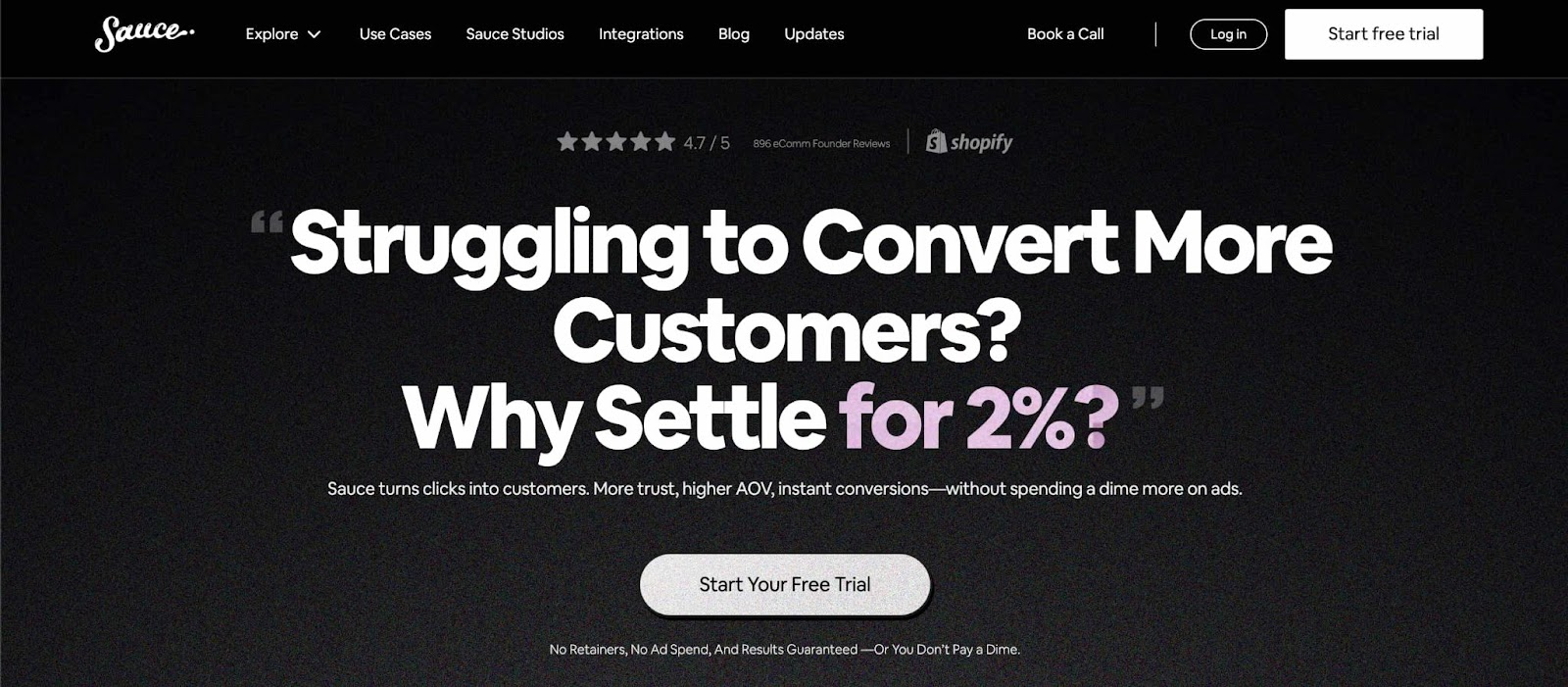
Platform Coverage: Integrates with Instagram and TikTok
Best For: AddSauce is designed for eCommerce and D2C brands that want to transform influencer and customer content into shoppable media, integrating UGC across websites and email campaigns to boost conversions.
Pricing:
Free 7-day trial available on all plans.
Reviews: 4.6 / 5.0 (Shopify App Store)
Ease of Use (UX/UI): Merchants often find AddSauce simple and quick to set up, thanks to drag-and-drop galleries and user-friendly tools. Still, scaling usage can become complex, particularly when managing impression caps or performance limits.
Customer Support: Support is often described as collaborative and responsive, with teams willing to customize features or assist with integrations. However, some users mention billing surprises or disputes tied to exceeding plan usage.
AddSauce specializes in visual commerce, turning influencer and UGC content into shoppable galleries and videos embedded across storefronts and emails. Reech Influence Cloud instead focuses on influencer discovery, audience insights, and structured campaign workflows. Pricing also differs significantly: AddSauce starts at $50/month with scalable expansion packs, making it accessible to smaller eCommerce brands. Reech, by comparison, requires custom, typically annual contracts with higher entry costs.
Brands looking for affordability and UGC-driven shoppable experiences might lean toward AddSauce, while those needing comprehensive influencer management and analytics at scale may opt for Reech.
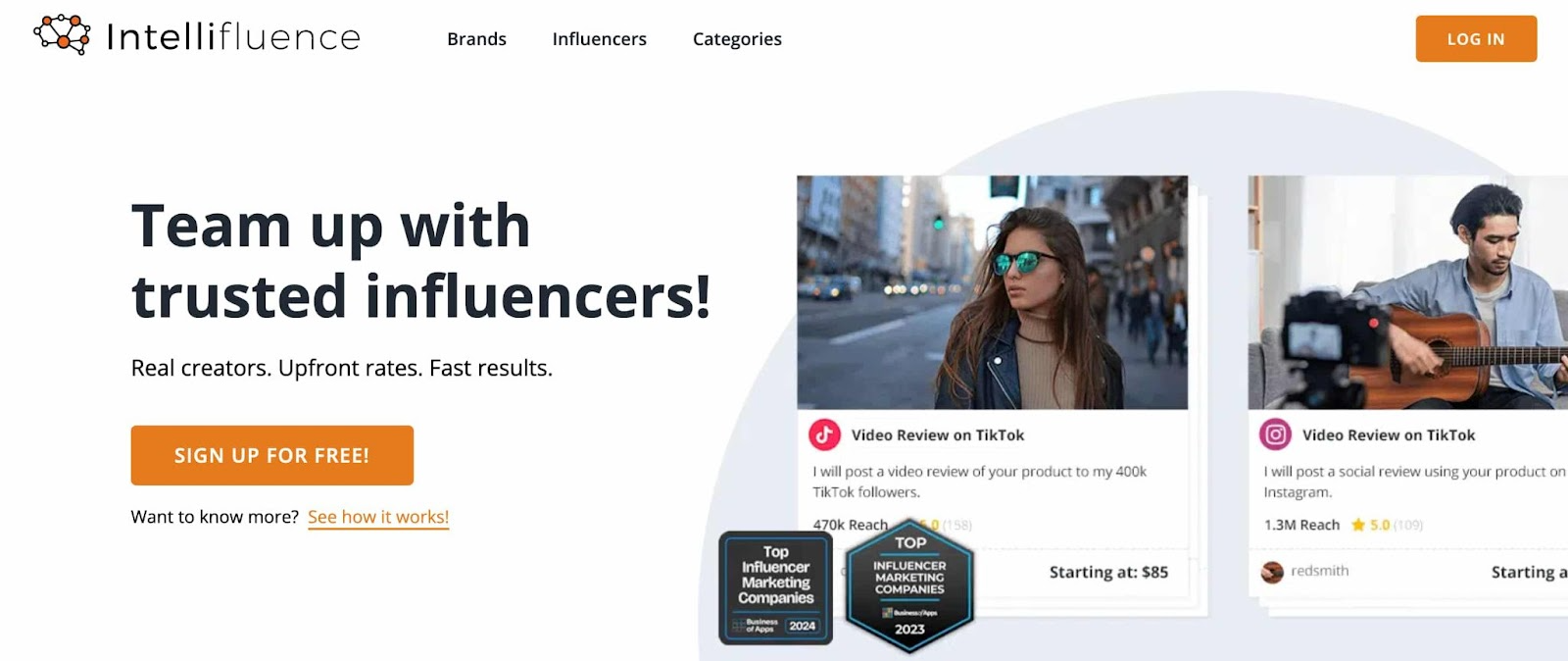
Platform Coverage: Intellifluence is a budget-friendly choice for small to mid-sized brands or marketers who want access to a large creator marketplace and campaign tools without committing to enterprise-level spend.
Best For: Small to mid-sized brands or marketers who want a lower-cost entry into influencer marketing, with access to a marketplace of creators and tools to run campaigns without needing enterprise budgets.
Pricing:
Note: A 10% transaction fee applies to cash payments processed through the platform.
Reviews: 0.0 / 5.0 (G2)
Ease of Use (UX/UI): The platform is often described as beginner-friendly thanks to its guided campaign wizard and straightforward dashboard. Still, as campaigns get more complex, some users feel the interface can become crowded and less flexible.
Customer Support: Users appreciate Intellifluence’s support calls and campaign check-ins available even at mid-tier plans, with generally quick response times. However, resolving advanced issues or customization requests can take longer and may depend on plan level.
Intellifluence appeals to smaller brands with its accessible $99/month entry plan, easy campaign wizard, and large marketplace of creators. Reech Influence Cloud, on the other hand, is geared toward mid-to-large brands that want structured campaign management, advanced reporting, and audience authenticity checks. The pricing models highlight the contrast: Intellifluence is transparent, contract-free, and affordable, while Reech uses custom, typically higher annual agreements.
While both handle influencer discovery and communication workflows, Intellifluence prioritizes affordability and marketplace flexibility, whereas Reech delivers more in-depth campaign oversight. Brands with limited budgets or just starting out may find Intellifluence more appealing, while established businesses seeking deeper insights, stronger analytics, and structured processes will see greater value in Reech.

Platform Coverage: Shopify, Salesforce, Adobe Commerce, WooCommerce, HubSpot, Zapier, and other major marketing and eCommerce platforms.
Best For: TrueLoyal is aimed at mid-to-enterprise consumer brands with multi-channel sales that want to combine loyalty programs, influencer/ambassador content, and UGC into one system to drive retention, advocacy, and engagement.
Pricing: Pricing is not publicly disclosed. TrueLoyal operates on a custom pricing model tailored to brand size and needs, with demos required for a detailed proposal.
Reviews: 4.8 / 5.0 (Capterra)
Ease of Use (UX/UI): Marketing teams find the dashboards modern and easy to navigate. That said, implementing advanced or highly customized omnichannel programs often requires additional setup time and learning.
Customer Support: Positions its service as “white-glove,” offering onboarding, program design, and regular business reviews. While support is generally hands-on, some users point out that pricing, terms, and even features are heavily dependent on negotiated contracts.
Discover our top 10 TrueLoyal (previously Tint) alternatives to explore the best options for streamlining your influencer campaigns
TrueLoyal blends loyalty programs, ambassador activations, and UGC management with strong AI-driven personalization for customer retention. Reech Influence Cloud is a more focused influencer marketing tool that emphasizes influencer discovery, structured campaign workflows, and detailed performance reporting.
Pricing-wise, both TrueLoyal and Reech rely on custom quotes and enterprise-style agreements. TrueLoyal may require significant setup for multi-channel programs, while Reech has a steep learning curve with its discovery and workflow tools. For brands prioritizing customer loyalty and rewards tied to influencer content, TrueLoyal is the better fit. For those focusing purely on influencer campaigns and analytics, Reech offers a more specialized solution.
When exploring alternatives to Reech Influence Cloud, it’s clear that brands and agencies have a wide range of tools to choose from, each offering unique strengths. Some platforms excel in influencer discovery, others shine in campaign management, while a few focus on detailed analytics and ROI tracking.
Among these options, Influencer Hero stands out as one of the best all-in-one alternatives, combining influencer search, outreach, CRM, and performance tracking into a single platform. Its user-friendly design and comprehensive features make it ideal for brands that want to manage the entire influencer marketing process seamlessly. By weighing your priorities and comparing these alternatives, you can confidently select the solution that best fits your strategy and helps maximize results from your influencer partnerships.
Book a demo with Influencer Hero today and discover how easily you can streamline and grow your influencer campaigns!

Top alternatives include Influencer Hero, Modash, Upfluence, Grin, and Captiv8. Influencer Hero stands out with its all-in-one platform, offering influencer discovery, CRM, outreach automation, and eCommerce integrations, making it a great choice for both small and large businesses.
Influencer Hero is more user-friendly with AI-driven automation, flexible pricing, and seamless eCommerce integrations. It’s ideal for eCommerce and D2C brands, while Reech focuses more on enterprise-level analytics and campaign management, with a steeper learning curve and higher pricing.
Influencer Hero offers excellent AI-powered features, including automated influencer discovery, outreach, and campaign optimization. It integrates these features with a full influencer CRM, making it a more comprehensive solution compared to others like Modash.
Yes, Influencer Hero is more cost-effective, with plans starting at $649/month for up to 1,000 creators. It offers a transparent pricing structure, while Reech typically requires custom quotes with higher costs.
Influencer Hero is the best option for eCommerce brands, offering seamless integrations with Shopify and WooCommerce, automated affiliate payouts, and influencer storefronts, making it ideal for driving sales through influencer marketing.



Schedule a Demo with one of our media experts below.